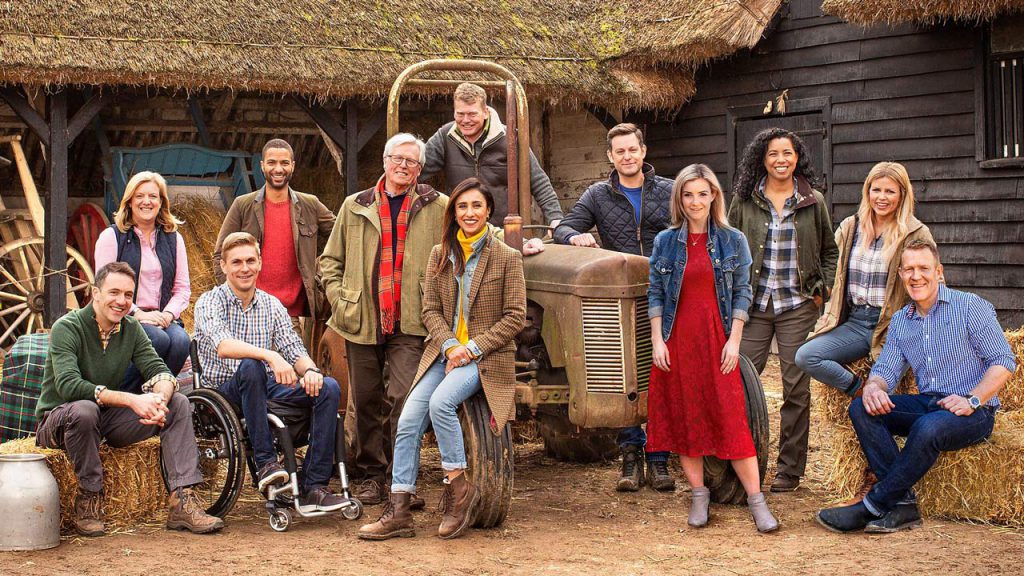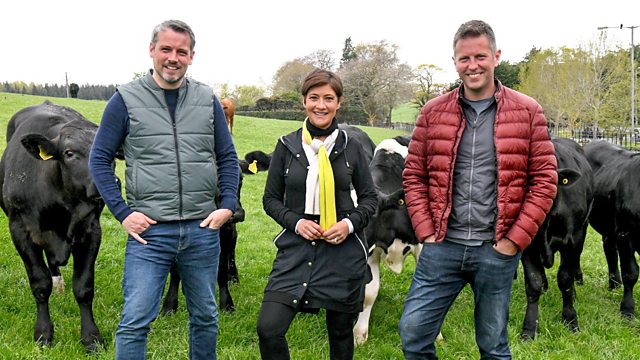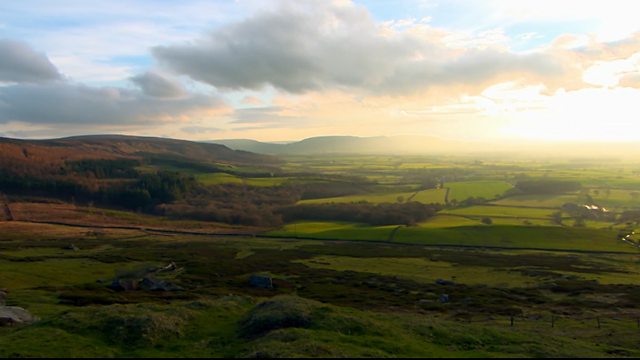Countryfile – Camel Trail: Nestled in the picturesque landscapes of north Cornwall, the Camel Trail stands as one of the most cherished recreational routes in the UK. This scenic path, stretching for 18 miles, traces the route of a former railway line, weaving through the quaint fishing town of Padstow, passing the lively town of Wadebridge, and reaching the rugged moorland of Bodmin. With its rich history, diverse wildlife, and vibrant communities, the Camel Trail offers a unique glimpse into the heart of Cornwall.
Join Adam Henson and Charlotte Smith as they embark on an exploration of the trail, delving into its storied past and the natural beauty that defines this beloved route. Their journey reveals the intricate tapestry of life along the Camel Trail, showcasing the dedication and passion of those who live and work in this enchanting region.
Adam sets off on his adventure halfway along the trail, where he discovers a remarkable conservation success story. He visits a farm that has undertaken the ambitious task of restoring a long-lost salt marsh habitat. This once-forgotten ecosystem has been brought back to life, creating a haven for a myriad of wildlife species. Adam witnesses firsthand how the rejuvenated salt marsh is now a thriving habitat, teeming with birds, insects, and aquatic life. The farm’s efforts have not only revived the landscape but also fostered a renewed sense of ecological balance and biodiversity in the area.
Continuing his journey, Adam makes his way to the outskirts of Padstow, where he encounters one of the oldest deer herds in the country. These majestic creatures, with their graceful presence, offer a glimpse into the region’s deep-rooted connection to wildlife and natural heritage. Adam learns about the herd’s history, their role in the local ecosystem, and the efforts to ensure their conservation for future generations.
Meanwhile, Charlotte Smith heads south along the trail towards the historic town of Bodmin. Here, she meets a family whose lives have been profoundly influenced by the breathtaking Cornish landscape. Inspired by the rolling hills and fertile soil, they have pursued their dream of establishing a vineyard. Charlotte delves into their journey, uncovering the challenges and triumphs they have faced in creating a thriving vineyard in such a unique environment. The family’s story is a testament to the innovative spirit and resilience that define the communities along the Camel Trail.
Countryfile – Camel Trail
As Charlotte reaches the end of the trail, her exploration leads her to the National Lobster Hatchery in Padstow. This vital institution plays a crucial role in the conservation and replenishment of lobster populations in the waters off north Cornwall. Charlotte gains insight into the hatchery’s groundbreaking efforts to breed and release lobsters, ensuring the sustainability of this iconic species. The hatchery’s work not only supports the local fishing industry but also contributes to the broader ecological health of Cornwall’s marine environment.
Beyond the scenic landscapes of Cornwall, Charlotte investigates a pressing issue affecting agriculture across England and Wales. She explores the latest initiatives aimed at tackling bovine tuberculosis (TB) in cattle, a persistent challenge for farmers. Charlotte speaks with experts and farmers to understand the impact of TB on livestock and the innovative strategies being implemented to combat this disease. Her inquiry sheds light on the collaborative efforts to protect both animal health and the agricultural livelihoods that depend on it.
“Countryfile: Camel Trail” offers an immersive journey through one of Cornwall’s most beloved routes, blending history, nature, and community into a rich tapestry of stories. From the revitalization of ancient habitats to the nurturing of new agricultural ventures, Adam Henson and Charlotte Smith capture the essence of the Camel Trail and the people who call it home. This exploration not only highlights the trail’s significance as a recreational haven but also underscores its role as a living, breathing landscape shaped by the hands and hearts of those who cherish it.
F.A.Q. Countryfile – Camel Trail
Q.: What is the Camel Trail, and where is it located?
A.: The Camel Trail is a highly regarded recreational route situated in north Cornwall, UK. It spans 18 miles, tracing the path of a disused railway line. This scenic trail connects the charming fishing town of Padstow with the historic town of Wadebridge and extends to the wild moorland of Bodmin. The trail is renowned for its picturesque landscapes, rich history, and diverse wildlife.
Q.: What can visitors expect to see along the Camel Trail?
A.: Visitors to the Camel Trail can anticipate a variety of attractions and natural beauty. The trail offers stunning views of the Cornish countryside, including lush woodlands, serene rivers, and rolling hills. Wildlife enthusiasts may encounter a range of species, from birds and insects in the restored salt marshes to the historic deer herd near Padstow. Additionally, the trail provides access to vibrant communities, historic sites, and cultural landmarks that reflect the region’s heritage.
Q.: How has the Camel Trail contributed to conservation efforts?
A.: The Camel Trail has played a significant role in local conservation initiatives. One notable effort is the restoration of a long-lost salt marsh habitat, which has rejuvenated the area and provided a haven for diverse wildlife. This project has helped to re-establish ecological balance and biodiversity. Furthermore, the trail supports conservation education and awareness, showcasing successful habitat restoration and sustainable practices to visitors.
Q.: What unique experiences does the Camel Trail offer for cyclists and hikers?
A.: The Camel Trail offers a unique and enjoyable experience for both cyclists and hikers. The relatively flat and well-maintained path makes it accessible for all ages and skill levels. Cyclists can enjoy a leisurely ride through the scenic countryside, while hikers can explore at a more relaxed pace, taking in the natural beauty and historical sites. The trail provides numerous stopping points where visitors can enjoy local food, visit quaint shops, or simply relax and soak in the views.
Q.: What is the significance of the National Lobster Hatchery in Padstow?
A.: The National Lobster Hatchery in Padstow is a critical institution for marine conservation. It focuses on breeding and releasing lobsters to replenish the population in the waters off north Cornwall. This effort not only supports the sustainability of the lobster fishery but also contributes to the broader ecological health of the marine environment. The hatchery is a key player in local conservation, providing education and raising awareness about the importance of marine biodiversity and sustainable fishing practices.
Q.: How does the Camel Trail support local communities and businesses?
A.: The Camel Trail is an economic and social asset for local communities and businesses. It attracts a significant number of visitors each year, boosting tourism and supporting local enterprises such as cafes, bike rental shops, and accommodations. The trail also fosters community engagement through events, conservation projects, and educational programs. By highlighting the region’s natural and cultural heritage, the Camel Trail helps sustain the livelihoods of those who live and work along its route.
Q.: What historical aspects are highlighted along the Camel Trail?
A.: The Camel Trail is steeped in history, with various points of interest that reflect its past. The trail itself follows the route of a former railway line, which played a crucial role in the region’s industrial era. Along the way, visitors can explore historical landmarks, such as old railway stations, bridges, and the remnants of industrial infrastructure. These sites offer insights into the historical development of north Cornwall and its transformation over the centuries.
Q.: How can visitors access the Camel Trail and what facilities are available?
A.: The Camel Trail is easily accessible from several key points, including Padstow, Wadebridge, and Bodmin. Each of these locations offers parking facilities, bike rental services, and visitor information centers. The trail itself is well-signposted and maintained, providing rest areas, picnic spots, and scenic viewpoints. Additionally, there are several cafes and restaurants along the route where visitors can enjoy local cuisine and refreshments.
Q.: What makes the Camel Trail a unique destination for nature enthusiasts?
A.: The Camel Trail is a unique destination for nature enthusiasts due to its diverse ecosystems and abundant wildlife. The trail passes through various habitats, including woodlands, wetlands, and coastal areas, each supporting a range of flora and fauna. Conservation efforts, such as the restoration of salt marshes, have enhanced the trail’s biodiversity, making it a rich environment for birdwatching, wildlife observation, and ecological study. The trail’s commitment to preserving and showcasing natural beauty makes it a standout attraction for those passionate about the environment.




